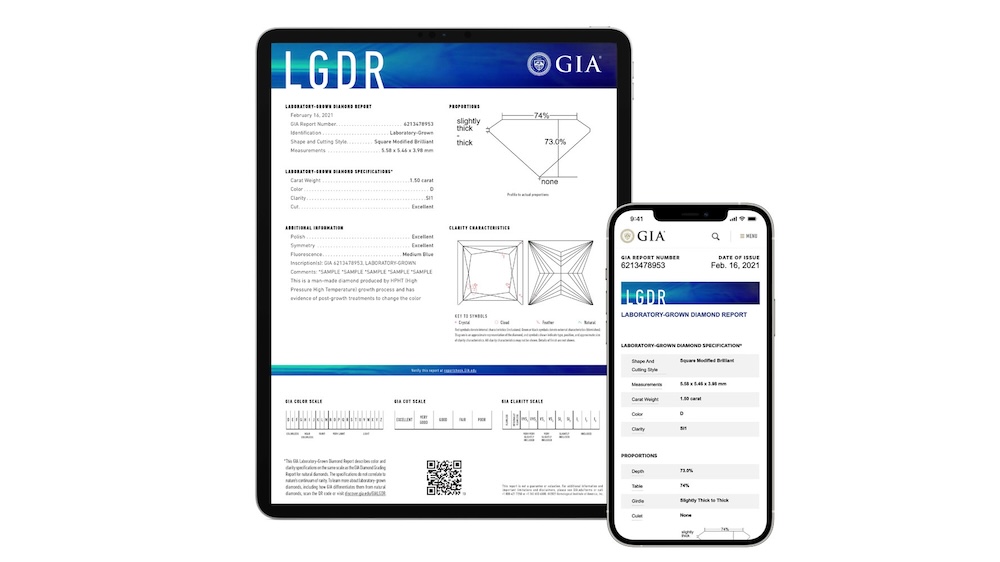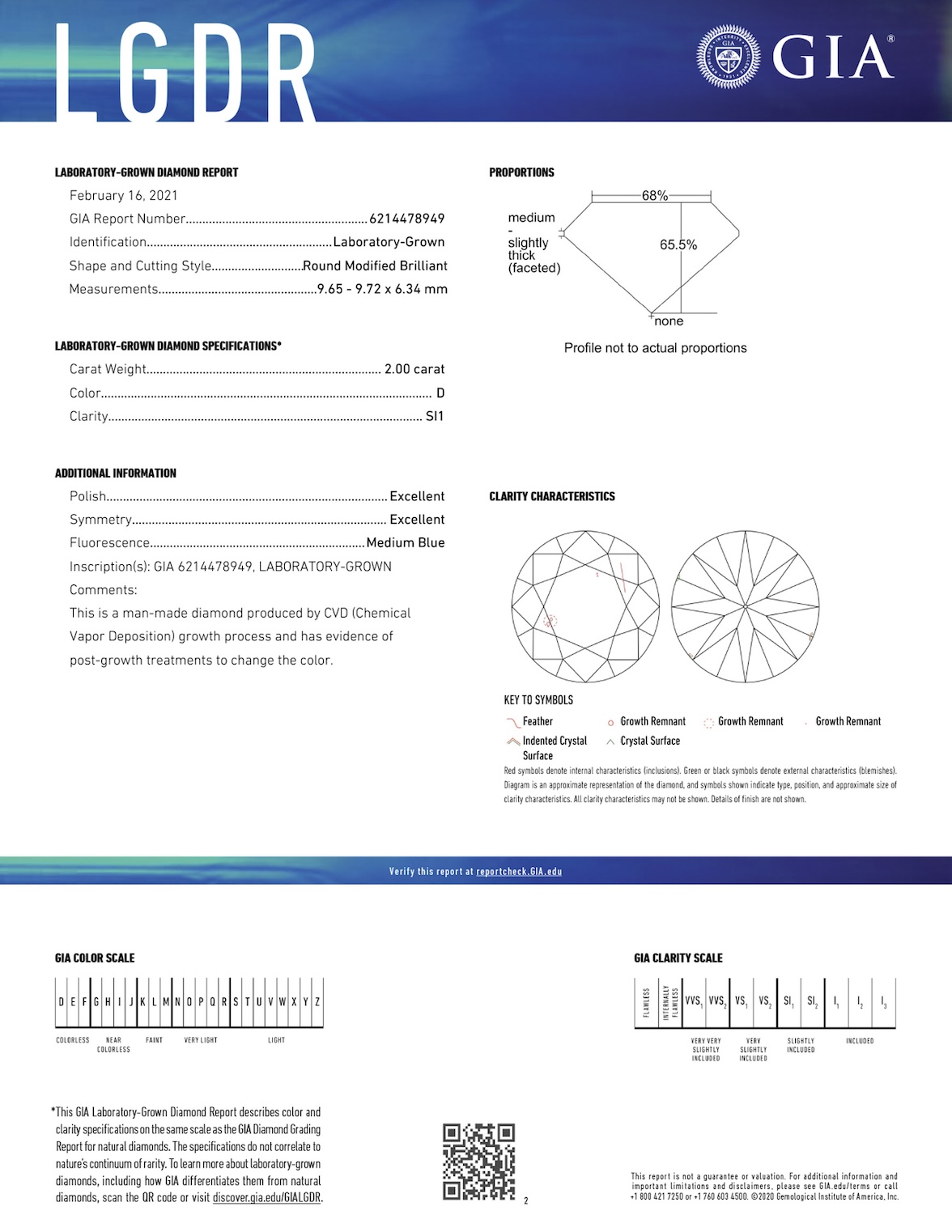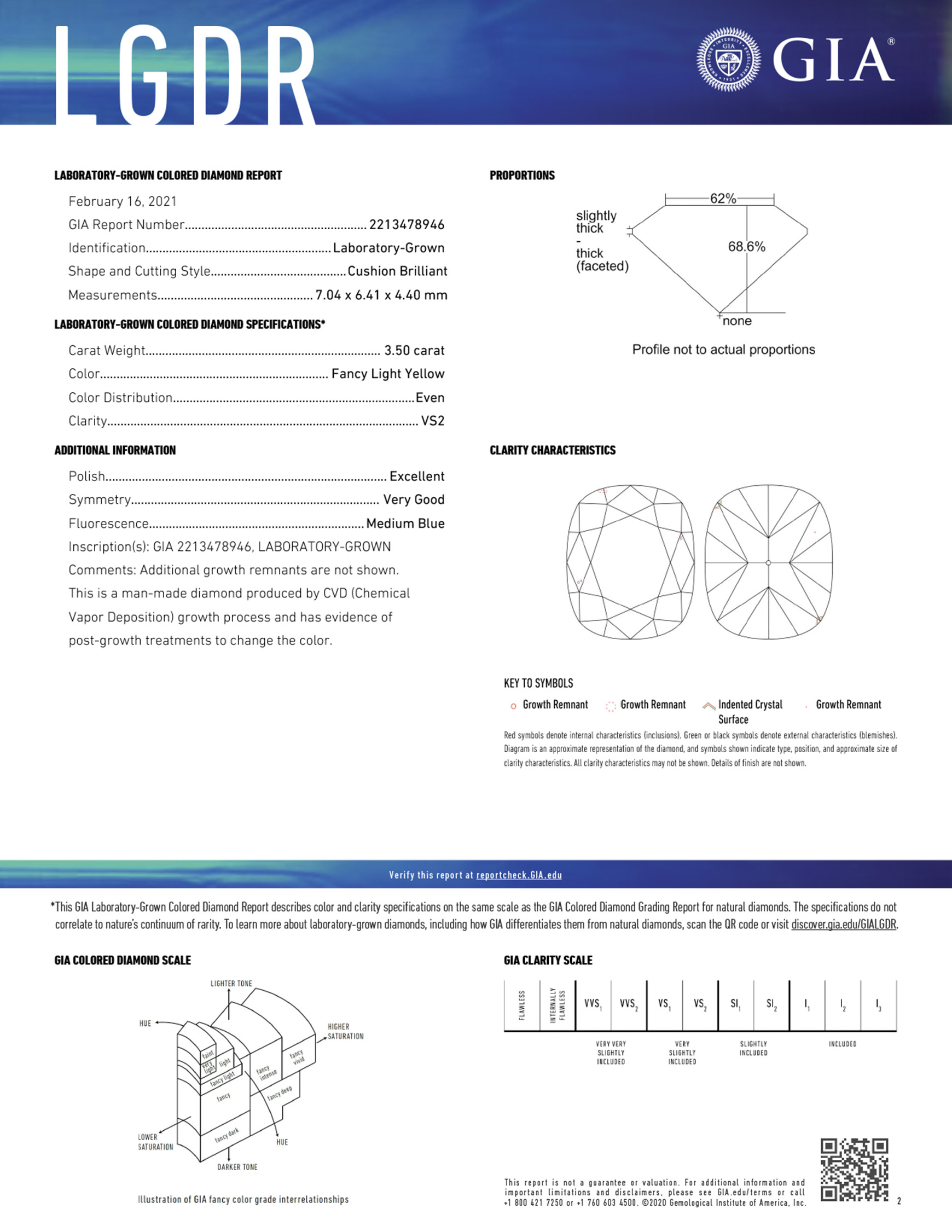©2024 Lab Diamonds Reviews – All Right Reserved.
Education
GIA Lab Diamond Certification

This article has mentions of products from one or more companies, and I may receive compensation if you purchase those products following reading my recommendations.
The Gemological Institute of America (GIA) is a name synonymous with trust, excellence, and authority in the world of gemology. Founded in 1931, GIA has established itself as the preeminent organization for diamond grading and gemstone identification. In the rapidly evolving landscape of the diamond industry, the emergence of lab-grown diamonds has marked a significant shift. These diamonds, created through sophisticated technological processes, offer an alternative to natural diamonds, aligning with contemporary values of sustainability and ethical sourcing. As lab-grown diamonds gain prominence, GIA’s involvement in certifying these gems has become increasingly important, providing a vital link between innovation and trust in the jewelry market.
What's In This Guide
ToggleIn search of GIA-certified lab diamonds? Consider Whiteflash for their outstanding quality and designer settings, Brilliant Earth for their extensive and ethically sourced selection, and Blue Nile for their vast array of choices.
The Significance of GIA Certification
Diamond certification, a critical component in the evaluation and sale of diamonds, serves as a badge of authenticity and quality. GIA, with its storied history and unparalleled reputation, plays a crucial role in this realm. The institute’s certification is widely regarded as the gold standard in the industry, both for natural and lab-grown diamonds. For lab-grown diamonds, GIA certification offers a guarantee of the stone’s attributes as assessed by the world’s leading gemological experts. This certification not only provides consumers with assurance about the quality and characteristics of their diamond but also reinforces the credibility and value of lab-grown diamonds in the global market.
GIA’s Grading Process for Lab-Grown Diamonds
GIA’s grading process for lab-grown diamonds is grounded in the same meticulous attention to detail and scientific rigor that characterizes its approach to natural diamonds. This process involves a comprehensive assessment of the diamond’s 4Cs — Cut, Color, Clarity, and Carat Weight. However, when it comes to lab-grown diamonds, GIA also includes specific evaluations to determine their synthetic origin.

GIA Lab Grown Diamond Certificate
The institute uses advanced technologies to differentiate lab-grown diamonds from natural ones and to identify the methods used in their creation, be it High Pressure High Temperature (HPHT) or Chemical Vapor Deposition (CVD). This thorough approach ensures that each lab-grown diamond certified by GIA is not only evaluated for its inherent qualities but also accurately identified in terms of its laboratory origin, providing a clear and honest report of its characteristics.
Reading and Understanding a GIA Report
A GIA report for a lab-grown diamond is a comprehensive document that offers a wealth of information about the diamond’s characteristics. The report includes a detailed analysis of the 4Cs — Cut, Color, Clarity, and Carat Weight — providing a clear picture of the diamond’s quality. Additionally, the report highlights the diamond’s synthetic origin and the method used to create it (HPHT or CVD).

Key components of the report include a plot diagram illustrating the diamond’s inclusions and blemishes, proportion diagrams, and specific comments regarding any additional features or treatments. Understanding a GIA report is crucial for buyers as it not only assures the quality and authenticity of the diamond but also aids in making an informed purchase decision.
GIA vs Other Certifications for Lab-Grown Diamonds
When comparing GIA certification with other prominent certifications like IGI, several key differences emerge, especially in the context of lab-grown diamonds. GIA is renowned for its stringent standards and rigorous grading process, which many in the industry consider the benchmark for diamond quality. GIA’s reports are highly detailed, offering a level of assurance and transparency that is highly valued in the market. However, other certifications, such as IGI, are also widely respected, particularly for their specialized focus on lab-grown diamonds. IGI may offer more detailed information specifically tailored to lab-grown varieties. Choosing between GIA and other certifications often comes down to personal preference, the specific needs of the consumer, and the perceived market value of the certification.
Discover the finest GIA lab diamonds at Whiteflash, Brilliant Earth, and Blue Nile. Choose Whiteflash for exquisite quality and designer elegance, Brilliant Earth for a diverse and ethical range, or Blue Nile for a broad selection of stunning diamonds.
The Market Perception of GIA-Certified Lab-Grown Diamonds
GIA-certified lab-grown diamonds are generally held in high esteem in the market. GIA’s reputation for accuracy, consistency, and reliability in diamond grading lends a significant degree of credibility to these stones. This certification can enhance consumer confidence and is often associated with higher quality. Consequently, GIA-certified lab-grown diamonds may command a premium in the market, both in terms of pricing and perceived value. However, as the market for lab-grown diamonds continues to evolve, consumer awareness and preferences are also shifting, with other certifications gaining recognition for their quality assessments in this specific sector.
Consumer Considerations When Choosing GIA Lab Diamonds
For consumers interested in purchasing lab-grown diamonds, opting for GIA certification comes with several considerations. While GIA certification is a mark of quality and authenticity, buyers should also evaluate other factors such as the diamond’s appearance, price, and the specific needs or preferences they have. It’s important to remember that a GIA report provides a detailed analysis of the diamond, but personal taste in terms of cut, color, and style also plays a significant role in the selection process. Additionally, consumers should consider the ethical and environmental implications of their choice, as lab-grown diamonds are often sought for these reasons. GIA’s certification assures buyers not only of the quality of their diamond but also supports their decision in choosing a more sustainable and ethical option.
Future Trends and Developments in GIA Certification for Lab Diamonds
The landscape of lab-grown diamonds is continuously evolving, and so too are the practices surrounding their certification. GIA has been adapting its methodologies and technologies to keep pace with these advancements. Future trends may include further refinement in detecting the nuances between lab-grown and natural diamonds, as well as enhancements in grading technologies to assess new types of lab-created diamonds. Additionally, as consumer interest in sustainability grows, GIA’s role in certifying lab-grown diamonds may become even more pivotal. The institute’s commitment to research and development in gemology indicates that its certification process will continue to evolve, reflecting the latest advancements and consumer expectations in the world of lab-grown diamonds.
Conclusion
GIA’s involvement in the certification of lab-grown diamonds adds a layer of trust and assurance to these modern marvels of technology and craftsmanship. As consumers navigate the diverse and expanding world of lab-grown diamonds, GIA certification stands as a beacon of reliability and quality. Understanding the nuances of GIA’s grading process, the significance of its certification, and the market perception of GIA-certified lab-grown diamonds is crucial for making informed decisions. As the industry continues to evolve, GIA’s role in certifying lab-grown diamonds is likely to remain a key factor in shaping consumer confidence and market trends.
Looking for top-quality GIA lab diamonds? Whiteflash, Brilliant Earth, and Blue Nile are your go-to destinations. Whiteflash excels in high-quality diamonds and designer settings, while Brilliant Earth and Blue Nile offer a wide selection, despite the lack of specific certification filtering. Embark on your journey to find exceptional GIA-certified diamonds with these leading retailers.
